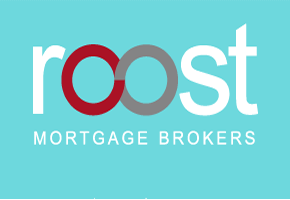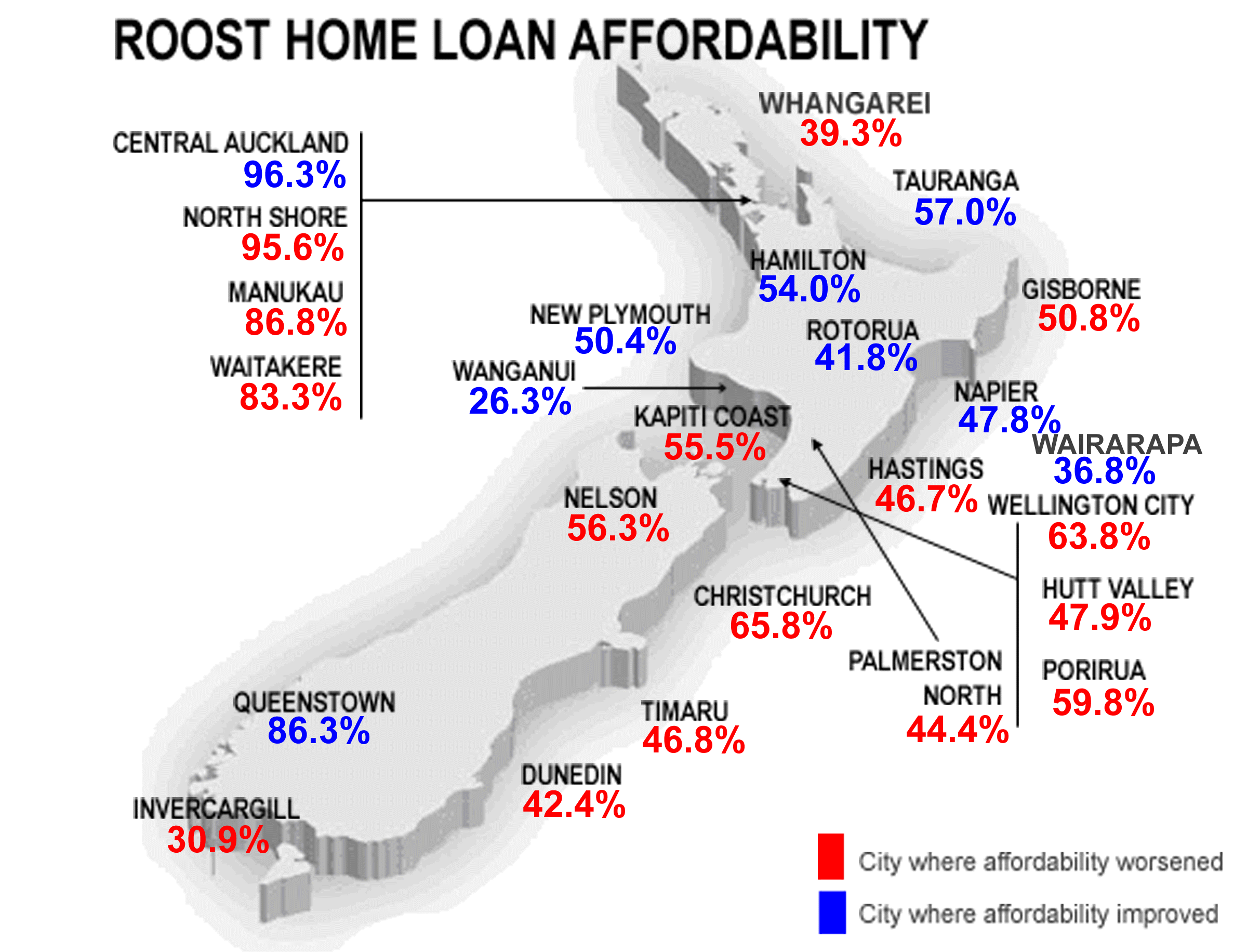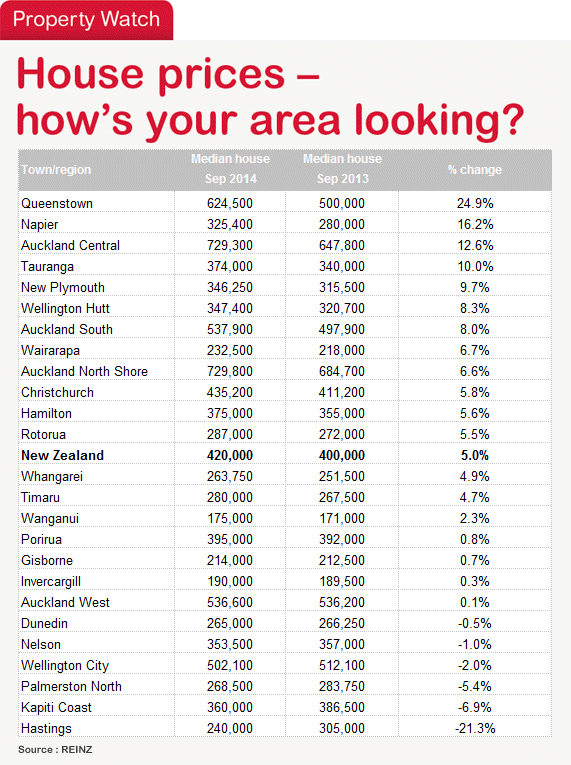
Home loan affordability worsened across most of New Zealand in October as higher median houses more than offset any rises in incomes.
The Roost Home Loan Affordability Reports showed a worsening in North, South and West Auckland, all of Wellington and Christchurch as house prices rose in October in those regions. Central Auckland, Hamilton and Queenstown improved slightly because of falls in house prices.
The national median house price rose to $430,000 in October from $420,000 in September. The average two year fixed mortgage rate was unchanged at 6.13%, although it has dropped since the end of October to under 5.95%.
The Roost Home Loan Affordability reports show national affordability for typical buyers deteriorated to 61.4% in October from 61.1% in September. The measure for first home buyers also showed a slight deterioration with rising house prices in all of Auckland, Wellington and Christchurch.

Affordability may improve in November if house prices remain stable, given the falls in fixed mortgage rates in recent weeks as the inflation outlook has been subdued. Banks have been more aggressive in recent months in offering cut-rate longer-term fixed mortgage rate deals, passing on the benefits of low international and local funding costs. Banks have cut their best advertised two-year mortgage rates to around 5.75% in the last month and are working with brokers to win market share.
"Banks are keen to increase their lending and are offering their best deals to those able to negotiate hardest," said Roost Mortgage Brokers spokeswoman Colleen Dennehy.
Affordability was toughest for first home buyers on the North Shore of Auckland, where it took 109.8% of a single median after tax income to afford a first quartile priced house, which was up from 108.6% in September. South Auckland was only slightly less expensive at 103.9% and was more expensive than Queenstown at 89.4%.
Housing affordability has become a major economic and political issue over the last two years. The Reserve Bank and Government agreed on a toolkit of 'macro-prudential' controls that would see the central bank impose limits on growth in high LVR mortgages. Central and local governments are also moving to address housing supply shortages. The Reserve Bank's speed limit on high LVR loans was applied on October 1 last year, and will extend into 2015 after it successfully helped halve house price inflation through late 2013 and early 2014.
Wanganui most affordable for first home buyers
For first home buyers – which in this Roost index are defined as a 25-29 year old who buys a first quartile home – there was a worsening in affordability in most regions covered and the national measure also deteriorated because of a rise in the price of the lowest quartile of houses.
It took 49.5% of a single first home buyer's income to afford a first quartile priced house nationally, up from 49.4% a month earlier. The most affordable city for first home buyers was Wanganui, where it took 18.5% of a young person's disposable income to afford a first quartile home.
Any level over 40% is considered unaffordable, whereas any level closer to 30% has coincided with increased buyer demand in the past.
For working households, the situation is similar, although bringing two incomes to the job of paying for a mortgage makes life considerably easier. A household with two incomes would typically have had to use 43.3% of their after tax pay in October to service the mortgage on a median priced house. This is up from 40.2% in the previous month.
On this basis, most smaller New Zealand cities have a household affordability index below 40% for couples in the 30-34 age group. This household is assumed to have one 5 year old child.
For first-home buying households in the 25-29 age group (which are assumed to have no children), affordability nationally worsened to 25.9% of after tax income in households with two incomes required to service the debt. This was up from 25.3% the previous month. The lower quartile house price rose to $285,000 in October from $279,500 in September.
Any level over 30% is considered unaffordable in the longer term for such a household, while any level closer to 20% is seen as attractive and coinciding with strong demand.
First home buyer household affordability is measured by calculating the proportion of after tax pay needed by two young median income earners to service an 80% home loan on a first quartile priced house.
No chart with that title exists.



We welcome your comments below. If you are not already registered, please register to comment.
Remember we welcome robust, respectful and insightful debate. We don't welcome abusive or defamatory comments and will de-register those repeatedly making such comments. Our current comment policy is here.